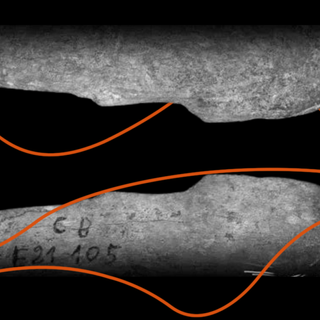Scientists have discovered a fossilized web of a 385-million-year-old root network near Cairo in New York. Interestingly, however, the picture it paints of the world’s oldest known forest didn’t look anything like the scientists expected.
Published in PLOS One, the study bases its findings on the root network that was found on the gray stone of a municipal highway department quarry. It, essentially, contains traces of the roots of some — at least three — of the earliest tree-like plants on the Earth that survived at a time when the atmosphere of the Earth had three to five times the level of carbon dioxide it does today.
One of these ancient plant species would have looked like pine trees but with hairy, fern-like fronds for leaves; another was similar to palm trees, with bulbous bases and fern-like branches. Yet another, described as “initial tree ‘wannabes'” by Science Alert, resembled large stalks of celery, shooting 32 feet high into the sky — reminiscent of the fairy tale “Jack and the Beanstalk.”
What surprised the scientists was that these weren’t the kind of trees they had expected to find in the region — given that New York, in those days, mainly had barren landscapes and a semi-arid climate. On the other hand, these trees had shallow, non-branching roots, leading the scientists to wonder how they could’ve coped well in the dry conditions New York presented.
Yet, the trees had adapted well to the semi-arid climate of New York that some of the species thrived here, possibly for more than 16,000 years.
Related on The Swaddle:
Flowers Are Changing Colors To Adapt To Rising Temperatures, Declining Ozone
“Not only could trees tolerate drier environments, but also the harsh environments of the expansive clays that dominated [the] plains,” Khudadad, an evolutionary ecologist from the Binghamton University in New York, who authored the study, said in a statement.
“This finding suggested that the earliest trees could colonize a range of environments and weren’t limited to the wet environments,” Khudadad added.
The insights into the adaptability of plants in a world that looked very different from the present-day lead to the question — can they adapt once again to survive climate change? Unfortunately, scientists still don’t know the answer to that.
They have, nonetheless, tried to answer it through past research based on mummified leaves that suggested plant life may be able to adapt to rising levels of carbon dioxide in the atmosphere. Some experts also refer to the carbon fertilization effect, suggesting that an increase in carbon dioxide levels in the atmosphere also increases the rate of photosynthesis in plants, leading to “global greening,” according to a 2010 study.
But nothing, so far, provides any conclusive answer on the adaptability of plants to emerging climate conditions. “How it plays out is anyone’s guess. It’s another layer of stress for plants. It might be great for some and horrible for others,” Tammo Reichgelt, a paleobotanist from the University of Connecticut, who was the lead author of the study on mummified leaves, said in 2020.




